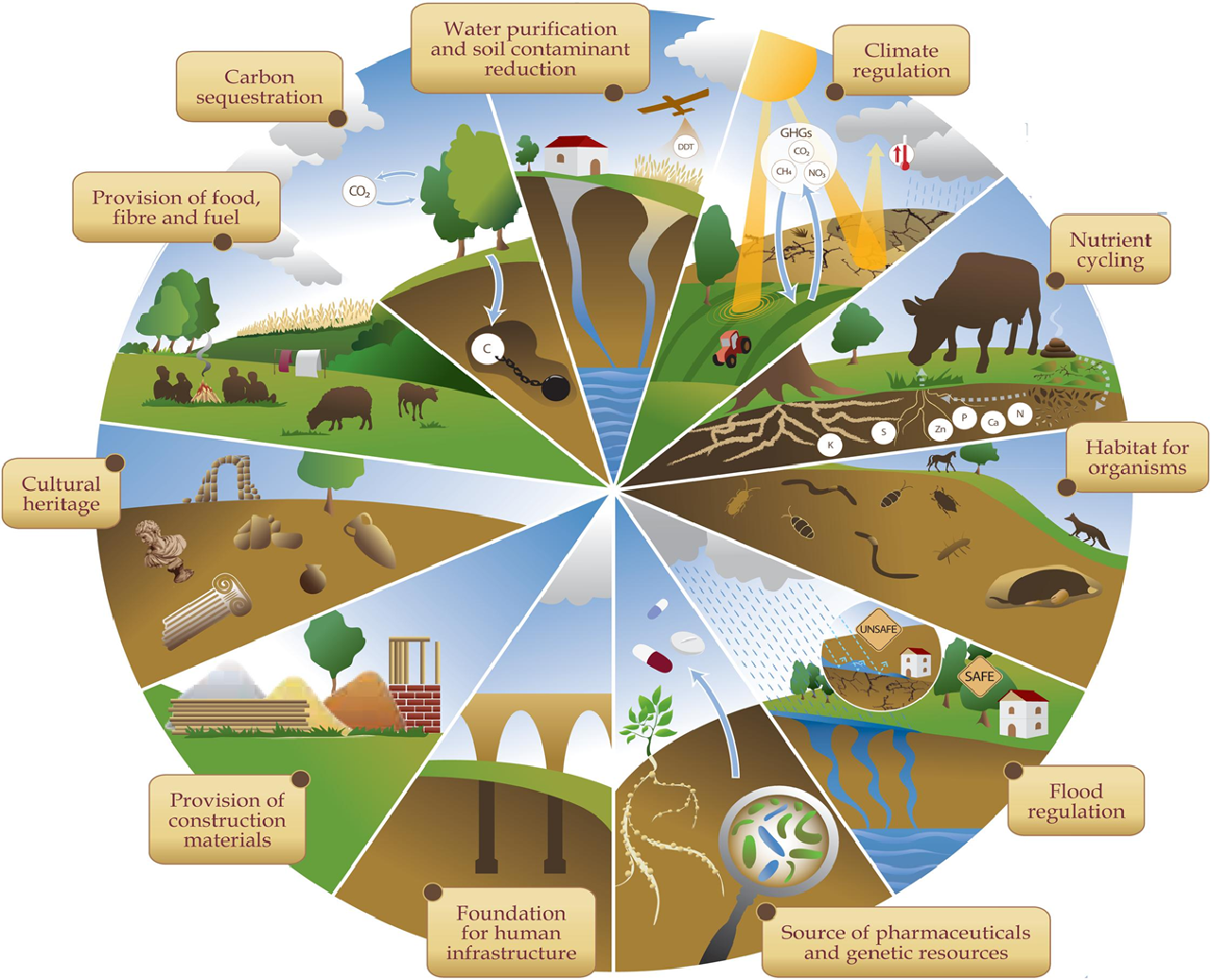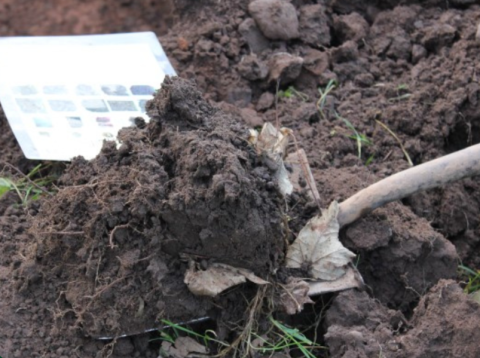What influences soil carbon?
Soil systems are living entities that are continuously cycling nutrients and water, leading to heterogeneous systems that vary across spatial and temporal scales. Soil composition and carbon content is governed by the interaction between chemical, physical and biological properties of the soil, climatic and environmental processes as well as land management practices, outlined in table 1.
Table 1: Factors influencing soil composition and carbon content
| Inherent soil properties | E.g. soil type, texture, pH, bulk density, biological diversity, porosity, aggregation |
| Climatic & environmental factors | E.g. Rainfall & temperature (intensity and frequency of weather events). Topography & slope |
| Land management practices | E.g. Land use type (agriculture / forest / grassland / horticulture), tillage, nutrient inputs (fertilisers, manures, residues), rotation design, liming , grazing management. |
Measuring soil carbon
There are two common methods for determining soil carbon content (1) through measuring the soil organic matter content (e.g. via loss on ignition) and then converting this to an organic carbon content using the assumption that 58% of organic matter is carbon (2) measuring soil carbon content directly through elemental analysis which often provides a carbon concentration as %C or gC/kg soil.
However the ‘stock’ of carbon is generally considered a more robust estimate to monitor changes in soil carbon content over time as it takes into account soil thickness and density. To estimate the volume of carbon in soils, the soil carbon concentration, soil depth and soil bulk density are needed. For example, if a soil has a carbon concentration of 20 g C/kg soil with a bulk density of 1.3 g/cm3, a soil carbon stock to 30cm depth can be calculated as 20 (g C/kg soil) x 1.3 (g/cm3) x 30 (cm) = 78 t C/ha.
Soil carbon and climate change
Soils are an important global store of carbon. It is estimated that globally topsoils contain approximately 2x as much carbon as the atmosphere with full soil profiles containing approximately 3x as much carbon as the atmosphere. Soils play an important role in climate change through the ability of carbon sequestration leading to these large stores of carbon, which need to be conserved. However depending on soil management and soil degradation, this balance is disrupted and soils can become a net source of emissions (where emissions outweigh carbon removal) opposed to a sink of carbon (where sequestration and storage of carbon outweighs losses through emissions and leaching).
There are 4 key components to the terrestrial carbon cycle, which occur naturally
- Carbon inputs (photosynthesis, root material, exudates, leaf litter, residues, manures)
- Decomposition & mineralisation of inputs
- Carbon storage mechanisms (physical protection, chemical bonding and within eh biological pool)
- Carbon outputs (gas emissions (CO2 & CH4), leachates and physical losses through erosion)
In theory, soil carbon sequestration can be enhanced by increasing carbon inputs, while slowing decomposition & mineralisation processes, increasing storage capacity and reducing carbon outputs. However, soils are complex systems and it can be difficult to control and quantify management effects on soil carbon storage. There are also uncertainties relating to how much more carbon can be stored in soils and the permanence of carbon inputs over time, stored in soils and the permanence of carbon inputs over time.
Soil carbon and soil health
Soil organic matter and carbon content is just one indicator of soil health.
Many land practices suggested for enhancing soil carbon are those advocated for good soil health, which contributes to providing wider ecosystem services than just carbon storage.
For example: reduced soil disturbance, reduce erosion risk, optimise grazing and nutrient management and restore degraded soils.
The conservation of current soil carbon stores is vital for preventing soils becoming a net source of greenhouse gas emissions, preserving soil functions (see fig 1), resilience of soils and sustainable productivity over time.

Figure 1. Soil functions https://www.fao.org/documents/card/en?details=0815e457-c6a4-47e9-ab6c-f23224279834/


